
Sri Lanka In der Heimat der Heilslehre sind Anwendungen mehr als Wellness
BlA?A?tterzA?A?hlen im Ayurveda-Dickicht
Duftende KrA?A?uter, aromatische KA?A?che, A?A?lige Massagen: zu Besuch im Resort einer Familie, die sich seit 200 Jahren der Lehre vom Wissen des Lebens widmet. Purchase methotrexate
Von Stefan Nink
Die beiden links noch, dann bin ich mir ganz sicher, dass es 87 sind. Nicht 86 oder 88, und auch nicht 92, wie ich zwischenzeitlich mal meinte. Nein: 87. Man mag gar nicht glauben, wie kompliziert es sein kann, in einer Badewanne zu liegen und BlA?A?tter zu zA?A?hlen. Das soll ich aber, damit ich nicht einnicke. Als ob diese Gefahr jemals bestehen kA?A?nnte! Das Badewasser wirft gleich BlA?A?schen, so heiA?A? ist es, und stA?A?ndig lA?A?uft mir das A?a??l in die Augen, mit dem mein Kopf eben noch massiert wurde. AuA?A?erdem piekst das Spinatzeugs, in das sie mich gepackt haben. Ich versuche, mit dem groA?A?en Zeh ein Loch in das KrA?A?uterdickicht an der WasseroberflA?A?che zu stoA?A?en. KA?A?hler wird es dadurch nicht. Zur Ablenkung kontrolliere ich noch mal das Ergebnis der ayurvedischen Algebra.
Cheap levothroid dosage
Dass ich die BlA?A?tter des Bhodibaums zA?A?hlen soll, dessen dA?A?rres GeA?A?st A?A?ber der Wanne kront, hat der Doc empfohlen. Lord Buddha habe das auch getan. Ich dachte, der Erleuchtete habe unter einem Baum meditiert. Dass er wie ich auf kleiner Flamme gegart worden war, wusste ich nicht. Was ich aber weiA?A?, ist: Der erste Anwendungstag ist gleich vorbei, ich darf sein Ende nur nicht verschlafen.
Wenn Sie beim Stichwort “Ayurveda” von Massagen im FA?A?nf-Sterne-Resort trA?A?umen, von samtenen A?a??len und regenbogenfarbenen Gesundheits-Cocktails, die ihnen Kellner zusammen mit frischen FlauschhandtA?A?chern an den Pool bringen, wenn Sie an Duftkerzen denken und an “CafA?A? del Mar”-KlA?A?nge – eben all das, was Ihnen Frauenzeitschriften penetrant als Ayurveda verkaufen -, dann erwartet Sie hier eine unsanfte Landung in der RealitA?A?t. Das “Siddhalepa Ayurveda Health Resort” in Sri Lanka ist alles andere als ein WohlfA?A?hl-Tempel, eher der HotelgeschA?A?ftszweig des berA?A?hmtesten Ayurveda-Familienunternehmens im Land. Die Hettigodas beschA?A?ftigen sich seit mehr als 200 Jahren mit nichts anderem als mit der “Lehre vom Wissen des Lebens”. Man kann sich vorstellen, dass ihnen ayurvedische Kleidungs- und Einrichtungstipps in deutschen Lifestylemagazinen egal sind.
ZunA?A?chst bekommt jeder eine kurze EinfA?A?hrung in die Lehre vom Vid (Wissen) des Ayu (Leben). Der Doc sieht aus wie aus einem Sri-Lanka-Bildband: asketische Gestalt, markante GesichtszA?A?ge, eisgraues Haar. Und ganz traurige Augen hat er, da passt es gut, dass er erst einmal seufzt: Ayurveda erklA?A?ren? UnmA?A?glich! Nach 35 Jahren Berufserfahrung kA?A?nne er vielleicht die GrundzA?A?ge der Lehre beschreiben, mehr nicht: ,Jeder Mensch hat ein bestimmtes VerhA?A?ltnis der drei Lebensenergien Vata, Pitta und Kapha in sich. Ist dieses VerhA?A?ltnis gestA?A?rt, wird er krank. Ayurveda versucht, das ursprA?A?ngliche Gleichgewicht wiederherzustellen.” Er seufzt noch einmal, als wisse er nicht genau, was er mit mir anfangen soll. Weil ich aber nun schon mal da bin, stellt er mir Fragen zu meinem Befinden.
Dann misst er fA?A?r eine Minute den Puls und diagnostiziert: “Sie sind ein Kapha-Typ, davon ist am meisten in Ihnen. Vom Moment, als Sie aus dem Mutterleib kamen, bis zu jenem Tag, an dem man Sie sechs FuA?A? tief unter die Erde schaufelt.” Und das bedeutet? Der Arzt schaut traurig. “Sie sind ein wenig behA?A?big. Bleiben lieber sitzen, als zu laufen. Nehmen sehr schnell sehr viel zu. Sind maA?A?los beim Essen. Beim Trinken auch. Und auch beim . . .” Stopp! Es reicht! Was tun wir dagegen? Die Antwort wird von einem besonders traurigen Blick untermalt: “Man kann nichts dagegen tun. Sie sind und bleiben Kapha. Zurzeit sind Sie allerdings ziemlich aufgedreht, weil das Vata auA?A?er Kontrolle ist. Das dA?A?mpfen wir. Ansonsten lassen wir alles, wie es ist.”
In meinem Fall geht das Vata-DA?A?mpfen wie folgt: Zuerst wird mein Kopf massiert, bis ich es tief drinnen im Hirn knacksen hA?A?re. AnschlieA?A?end wird etwa ein Barrel A?a??l in meinen KA?A?rper geknetet. Und dann muss ich raus auf einen Steinweg, zum Umherwandeln. Ein bA?A?ser Architekt hat Zehntausende Kiesel in den Boden einfA?A?gen lassen, die alle mit ihrer spitzen Seite nach oben schauen. Das Umherwandeln tut hA?A?llisch weh, was mich aufregt und eigentlich kontraindiziert sein mA?A?sste. Aber die werden schon wissen, was sie tun – oder mich tun lassen.
Wie der FuA?A?weg ist die komplette Anlage nach ayurvedischen Gesichtspunkten gebaut. Die Pfade zwischen Blumen und Palmen beispielsweise folgen verwirrenden Kurven, damit sich die GA?A?ste auf den Weg konzentrieren mA?A?ssen und so den Stress vergessen, den sie zurA?A?cklieA?A?en, als sie hierherkamen. Am rundlich geschwungenen Pool, den ich mit Geborgenheit assoziiere, liegt ein deutsches PA?A?rchen. Er liest ihr aus dem “Herrn der Ringe” vor. Ich bin sicher, dass sie lA?A?ngst eingeschlafen ist.
Wie ein Fantasy-Roman hA?A?rt sich auch die Geschichte des Unternehmens an, in dessen Resort unser Feintuning A?A?berholt wird. Asoka Hettigoda erzA?A?hlt sie, Tochter des Chefs, eine zierliche, quirlige Frau, deren ayurvedischer Dreiklang ihr offenbar ein Charisma bis knapp unter die Haarwurzeln beschert . Asoka erzA?A?hlt, wie ihr UrurgroA?A?vater auf der Suche nach Weisheit in den Himalaja pilgerte. Wie er dort einen Yogi traf, der ihm die Rezeptur eines heilenden Balsams anvertraute. Wie der Yogi prophezeite, UrurgroA?A?vater werde ein VermA?A?gen mit dem Balsam verdienen. Zum Dank solle er die HA?A?lfte des Gewinns an die Armen geben. Asoka erzA?A?hlt, wie die Hettigodas seitdem 50 Prozent aus dem VerkaufserlA?A?s jenes Balsams spenden. Bis heute.
Sollte man ihre Geschichte fA?A?r eine zauberhaft gewebte Firmenlegende halten und diese A?A?berlegung versehentlich offen aussprechen, dann packt einen Anoka ins Auto und fA?A?hrt A?A?ber StraA?A?en voller Menschen, hupender Autos und auf dem Mittelstreifen meditierender KA?A?he hinaus nach Mount Lavinia. Dort haben die Hettigodas ein Ayurveda-Krankenhaus gebaut. Die Behandlung ist fA?A?r alle kostenlos. “Das hat der Yogi damals gemeint”, sagt sie und beginnt, mit jedem Patienten im Wartezimmer zu plaudern. Wie gut, dass ich behA?A?biger Kapha-Typ bin, der lieber gemA?A?tlich rumsitzt und zuhA?A?rt als aufgeregt auf spitzen Steinen zu wandeln.
Die Sprache der Einheimischen klingt A?A?brigens, als kA?A?men aus dem Mund Murmeln gerollt, ganz viele und ganz schnell, ein ganzer Sack voll bei jedem Satz. Lustigerweise sieht die Schrift auch so aus: Viele knubbelige, runde Kringel purzeln neben- und A?A?bereinander Richtung Satzende. Und erst die Namen! “Belimal, Ashwaganda Arishtaya, Dasamoola Ariwaya”. Was sich fA?A?r europA?A?ische Ohren wie eine BeschwA?A?rungsformel anhA?A?rt, sind die Zutaten fA?A?r den Cocktail des Abends, den “Herbal Dream”. Balan Pushpendran mixt ihn, der Chefkoch des Resorts. Mittags und abends taucht er am BA?A?fett auf und kontrolliert, wer was isst, denn Kapha-Menschen wie ich brauchen natA?A?rlich andere Speisen als Pitta-Wesen. Wenn Balan merkt, dass es einem schmeckt, lA?A?dt er fA?A?r den nA?A?chsten Morgen zum Ayurveda-Kochkurs in seine KA?A?che ein. Da lernt man dann, dass CurryblA?A?tter gut gegen einen hohen Cholesterinspiegel sind, scharfe Chilis dagegen keinen positiven Effekt haben. Die ayurvedische KA?A?che macht kein groA?A?es Geheimnis um ihre Kunst: vegetarisch, ein Curry als Basis, variiert mit GemA?A?sen und immer wechselnden GewA?A?rzen. “Zimt!”, ruft Balan, sei ganz wichtig fA?A?r seine Kreationen und auf Deutsch so ein schA?A?nes Wort. Er mischt den Zimt in ein Okra-Curry und reicht einen ProbierlA?A?ffel weiter. Himmlisch!
Das ist das Besondere an einem Aufenthalt im “Siddhalepa Ayurveda Health Resort”: Man darf, ach was, man soll hinter die Kulissen schauen. In Balans KA?A?che, in den KrA?A?utergarten und in die Fabrik der Hettigodas, in der 1500 Angestellte aus 800 verschiedenen KrA?A?utern ayurvedische Produkte herstellen, die ihnen landesweit fast 3000 Zulieferer lastwagenweise herankarren. Dr. Weerasingha ist 87 und so etwas wie der Spiritual Rector des Unternehmens. In der Hand hA?A?lt er ein Curryblatt und sagt mit leiser Stimme: “Sehen Sie sich dieses Blatt genau an! Haben Sie es betrachtet?” Habe ich, es ist ein Curryblatt, eindeutig. Das stimme, sagt Dr. Weerasingha, aber natA?A?rlich sei Blatt nicht gleich Blatt. “Zu welcher Jahreszeit wurde es gepflA?A?ckt? FrA?A?h morgens oder in der Mittagshitze? In welcher Klimazone stand der Strauch? Wie alt war er? Nein, sagt er, man kA?A?nne nicht einfach ein beliebiges Curryblatt nehmen und es zusammen mit 54 anderen Substanzen zu einem MassageA?A?l verarbeiten. “Es gibt sehr detaillierte, bis zu 3000 Jahre alte Vorschriften zu diesem Blatt. Und Ihr im Westen bietet Kurse an, in denen man Ayurveda A?A?bers Wochenende lernen kann.” Dr. Weerasingha keckert leise. Dann verabschiedet er sich und schlurft zurA?A?ck ins BA?A?ro. Sein Lachen bleibt noch ein paar Sekunden in der Luft hA?A?ngen. Es vermischt sich mit dem Geruch von Tamarinde und Nelken.
Im Resort wartet der traurig dreinblickende Ayurveda-Arzt auf mich. Er misst den Blutdruck und scheint sehr zufrieden zu sein. Offensichtlich haben wir dieses aufmA?A?pfige Vata in seine Schranken gewiesen. Wie lange ich denn noch bleiben sollte?, mA?A?chte ich wissen. Er nickt und verschreibt weitere Massagen, WandelgA?A?nge und BA?A?der. Und er ermahnt mich: “Zwischen den Behandlungen machen Sie bitte nichts. Keine Interviews. Keine Recherchen. A?A?berhaupt nichts.” Er ahnt, was ich antworten mA?A?chte, und bevor ich ein Wort rausgebracht habe, wird er kategorisch: “Nein! Das Notebook bleibt aus. Achten Sie lieber auf die Stille. HA?A?ren Sie auf das Rascheln der Palmen, lauschen Sie dem Meer, lernen Sie, die Vogelarten auseinanderzuhalten! Und zA?A?hlen Sie die BlA?A?tter des Bodhibaumes A?A?ber der Badewanne!” Und wenn ich schon weiA?A?, dass es 87 sind? Er lA?A?chelt milde. “Ich bin sicher, dass Sie sich verzA?A?hlt haben.”
erschienen am 17. November 2007
Quelle:
Hamburger Abendblatt

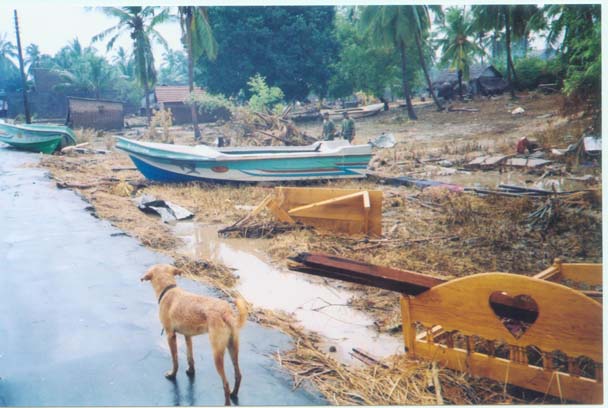
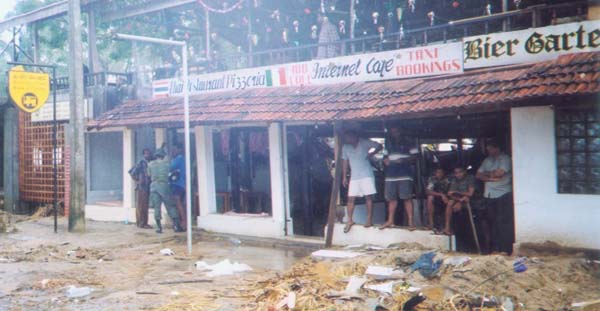
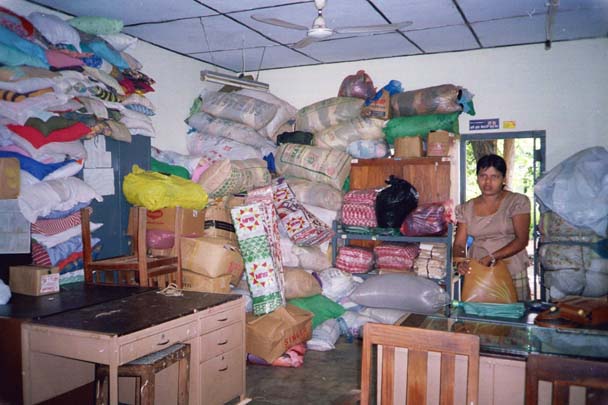





 High profile international recognition for Arugam Bay
High profile international recognition for Arugam Bay 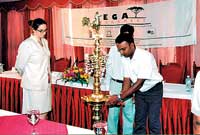


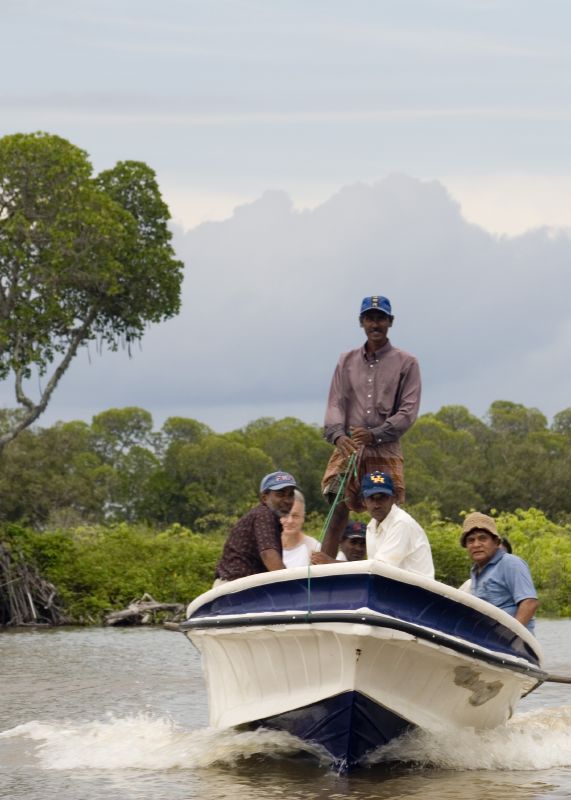

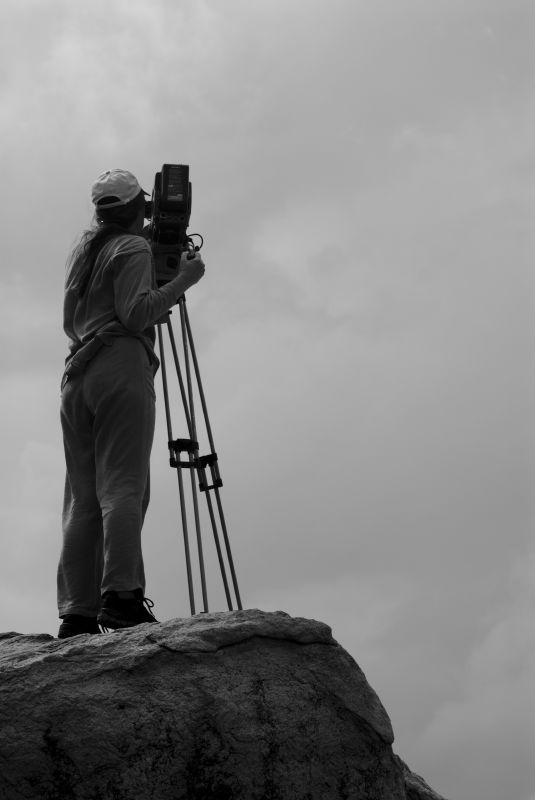
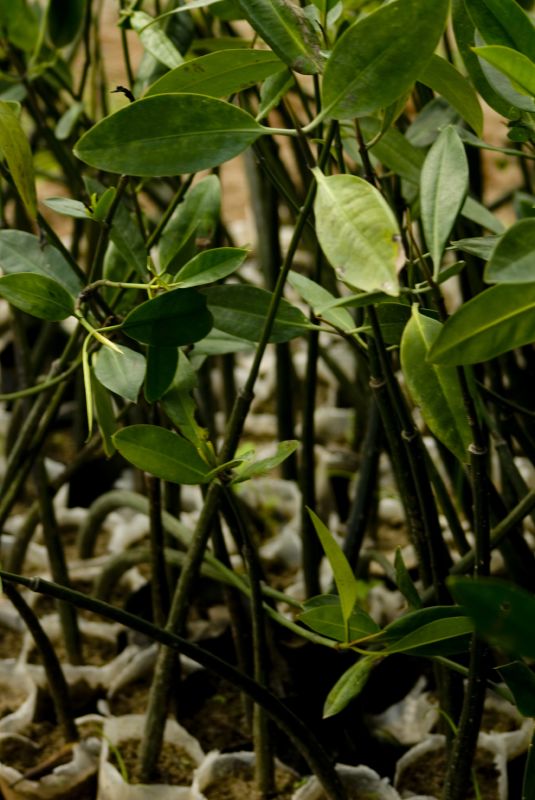
 Arugam Forum
Arugam Forum Arugam Photo Galleries on Picasa
Arugam Photo Galleries on Picasa Old Website
Old Website Press Coverage
Press Coverage Surf Forecast for Arugam Bay
Surf Forecast for Arugam Bay
TODAY’s Comments